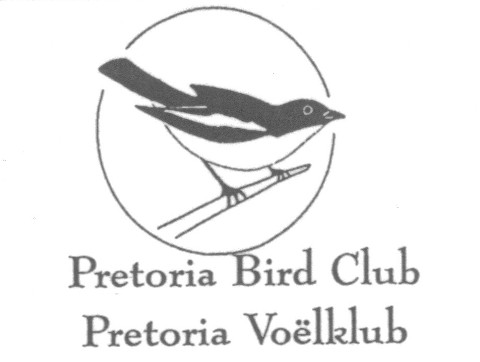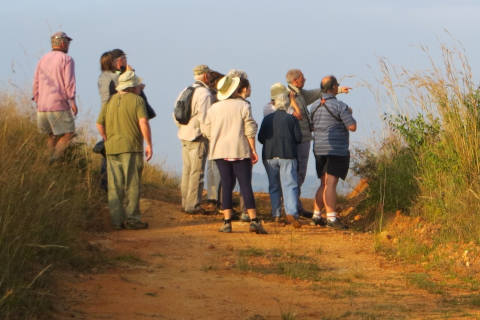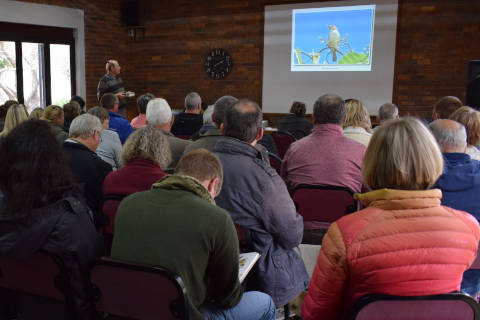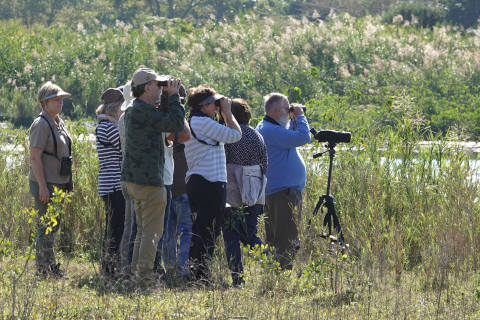About Us
BirdLife Northern Gauteng / Gauteng-Noord (BLNG) exists to ‘promote and co-ordinate the enjoyment, understanding, study and conservation of birds and their environments amongst its members as well as the public at large.’ We welcome birders of all ages and skill levels, and offer a range of regular activities to suit our members’ diverse interests: day outings, weekend camps and longer trips to special birding destinations, monthly evening meetings featuring guest speakers on a variety of topics related to birds and other environmental issues, expert-led courses to improve our knowledge of birds and their identification, involvement in citizen science, and opportunities to contribute to the conservation of birds and their habitats at a local and national level.
BirdLife Northern Gauteng is affiliated to BirdLife South Africa, which is a member of BirdLife International, a global partnership of NGOs dedicated to the conservation of the world’s birds.
BLNG is registered as a Recreational Club with SARS and is therefore a tax-exempt entity.
We adhere to the BirdLife South Africa Birding Code of Ethics, which aims to limit the potential negative impact of birdwatching on birds, their behaviour and their habitats, as well as on landowners and fellow birders.
The most recent amendment to our Constitution was adopted at the 2016 AGM.
To read about some of our past and upcoming events, please see the latest Programme or our newsletter, Laniarius.




History
The story of the club now known as BirdLife Northern Gauteng began in October 1949, when a Northern Transvaal branch of the South African Ornithological Society (SAOS) was founded in Pretoria. It was known as the Pretoria Bird Club. One of the club’s earliest projects was to propose and raise funds for the establishment of a bird sanctuary at Muckleneuk brickfields. The Austin Roberts Bird Sanctuary was opened in 1956, named for the pioneering ornithologist who had lived nearby and often watched birds there.
In 1960, based on concerns that the club’s name could lead to confusion that its scope included the interests of cage-bird enthusiasts, the Pretoria Bird Club was renamed the Northern Transvaal Wild Bird Society.
Unfortunately, interest in the club’s activities began to wane, and in 1964 the decision was made to incorporate its membership in that of the Witwatersrand Bird Club (WBC). But the Pretoria group never really lost its separate identity and later began arranging its own outings centred around Pretoria, with the consent of the WBC. Local members were also active in the ringing of Barn Swallows at Skinnerspruit, where an estimated 250 to 500 thousand swallows roosted in the reedbeds in summer.
By late 1969 the activities of the Pretoria section of WBC had developed to such a degree that the idea to again form a separate branch of SAOS was mooted. This became a reality in May 1970, with the establishment of the Northern Transvaal Ornithological Society (NTOS). The event was reported in the press and the first chairperson, Peter Mendelsohn, was interviewed on Radio Highveld.
The first NTOS committee gave the club its logo, featuring a Crimson-breasted Shrike and designed by Norman Meadows. An informal communique regularly sent to members about club matters and upcoming events was given the name Laniarius, after the scientific name of the NTOS’s striking emblem (Laniarius atrococcineus). In 1975, the more formal publication featuring members’ contributions about their sightings and field observations instead took on this title, a name which it proudly bears to this day.
The 1970 committee also delineated the geographical area of the NTOS. This included a large part of the former Transvaal province, which then progressively shrank over the years with the formation of separate clubs in other towns within the region. NTOS camps were held all over this area and beyond, and often involved camping in very rustic conditions, with intrepid club members traversing the many dirt roads of the old Transvaal in their kombis and other 2-wheel-drive vehicles.
From its earliest days the NTOS was actively involved in conservation. A Watchdog subcommittee was formed to act on reports of threats to the environment, and efforts were made to prevent the construction of a sewage works and fresh produce market by the Pretoria City Council at Skinnerspruit, but these ultimately failed and in 1973 the swallows’ roost was bulldozed. Members of the NTOS also made important contributions to bird censuses and atlassing projects, most notably the Magaliesberg census in 1978 and the Transvaal Atlas, which was finally completed in 1985 after 13 years of fieldwork, mostly by members of NTOS and WBC and later also the Lowveld branch.
In 1987, work began on the 5-year Southern African Bird Atlas Project (SABAP), with NTOS responsible for coordinating data collection and collation for 144 atlas squares to the north and west of Pretoria. In 1989, a Conservation subcommittee was formed, through which the club continued to advocate for the protection of important bird habitats in the city and surrounds.
The proclamation of the nine new provinces after the 1994 elections, as well as the recasting of the Southern African Ornithological Society as BirdLife South Africa in 1996, created the need for a new name for the NTOS. The original 1949 name of Pretoria Bird Club was adopted at the 1997 AGM.
The Pretoria area is well known among birders for the large number of species recorded here. The rich birdlife of the region was celebrated in the club’s 2001 Pretoria Birding Challenge, in which members were set the task of recording 400 species within 100 km of Church Square in a calendar year. Two members succeeded – with winner Johnny Wilson logging 411 species.
In April 2004, after much deliberation and consultation, and motivated by a desire for the club’s name to clearly convey its affiliation and close association with BirdLife South Africa, the club’s current name, BirdLife Northern Gauteng / Gauteng-Noord, was voted into effect. In 2017, the familiar image of an attentive Crimson-breasted Shrike, having served as the club’s logo, in more or less the same form, for 47 years, was replaced with a stylised version to create a new, minimalist emblem for BLNG.


